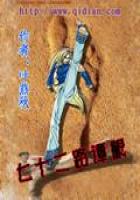I came to live in London, as I shall tell you, when I was nearly twenty-two. Wimblehurst dwindles in perspective, is now in this book a little place far off, Bladesover no more than a small pinkish speck of frontage among the distant Kentish hills; the scene broadens out, becomes multitudinous and limitless, full of the sense of vast irrelevant movement. I do not remember my second coming to London as I do my first, for my early impressions, save that an October memory of softened amber sunshine stands out, amber sunshine falling on grey house fronts I know not where. That, and a sense of a large tranquillity.
I could fill a book, I think, with a more or less imaginary account of how I came to apprehend London, how first in one aspect and then in another it grew in my mind. Each day my accumulating impressions were added to and qualified and brought into relationship with new ones; they fused inseparably with others that were purely personal and accidental. I find myself with a certain comprehensive perception of London, complete indeed, incurably indistinct in places and yet in some way a whole that began with my first visit and is still being mellowed and enriched.
London!
At first, no doubt, it was a chaos of streets and people and buildings and reasonless going to and fro. I do not remember that I ever struggled very steadily to understand it, or explored it with any but a personal and adventurous intention. Yet in time there has grown up in me a kind of theory of London; I do think I see lines of an ordered structure out of which it has grown, detected a process that is something more than a confusion of casual accidents though indeed it may be no more than a process of disease.
I said at the outset of my first book that I find in Bladesover the clue to all England. Well, I certainly imagine it is the clue to the structure of London. There have been no revolutions no deliberate restatements or abandonments of opinion in England since the days of the fine gentry, since 1688 or thereabouts, the days when Bladesover was built; there have been changes, dissolving forest replacing forest, if you will; but then it was that the broad lines of the English system set firmly. And as I have gone to and fro in London in certain regions constantly the thought has recurred this is Bladesover House, this answers to Bladesover House. The fine gentry may have gone; they have indeed largely gone, I think; rich merchants may have replaced them, financial adventurers or what not. That does not matter; the shape is still Bladesover.
I am most reminded of Bladesover and Eastry by all those regions round about the West End parks; for example, estate parks, each more or less in relation to a palace or group of great houses.
The roads and back ways of Mayfair and all about St. James's again, albeit perhaps of a later growth in point of time, were of the very spirit and architectural texture of the Bladesover passages and yards; they had the same smells, the space, the large cleanest and always going to and fro where one met unmistakable Olympians and even more unmistakable valets, butlers, footmen in mufti. There were moments when I seemed to glimpse down areas the white panelling, the very chintz of my mother's room again.
I could trace out now on a map what I would call the Great-House region; passing south-westward into Belgravia, becoming diffused and sporadic westward, finding its last systematic outbreak round and about Regent's Park. The Duke of Devonshire's place in Piccadilly, in all its insolent ugliness, pleases me particularly; it is the quintessence of the thing; Apsley House is all in the manner of my theory, Park Lane has its quite typical mansions, and they run along the border of the Green Park and St. James's. And I struck out a truth one day in Cromwell Road quite suddenly, as I looked over the Natural History Museum "By Jove," said I "but this is the little assemblage of cases of stuffed birds and animals upon the Bladesover staircase grown enormous, and yonder as the corresponding thing to the Bladesover curios and porcelain is the Art Museume and there in the little observatories in Exhibition Road is old Sir Cuthbert's Gregorian telescope that I hunted out in the storeroom and put together." And diving into the Art Museum under this inspiration, I came to a little reading-room and found as I had inferred, old brown books!
It was really a good piece of social comparative anatomy I did that day; all these museums and libraries that are dotted over London between Piccadilly and West Kensington, and indeed the museum and library movement throughout the world, sprang from the elegant leisure of the gentlemen of taste. Theirs were the. first libraries, the first houses of culture; by my rat-like raids into the Bladesover saloon I became, as it were, the last dwindled representative of such a man of letters as Swift. But now these things have escaped out of the Great House altogether, and taken on a strange independent life of their own.













